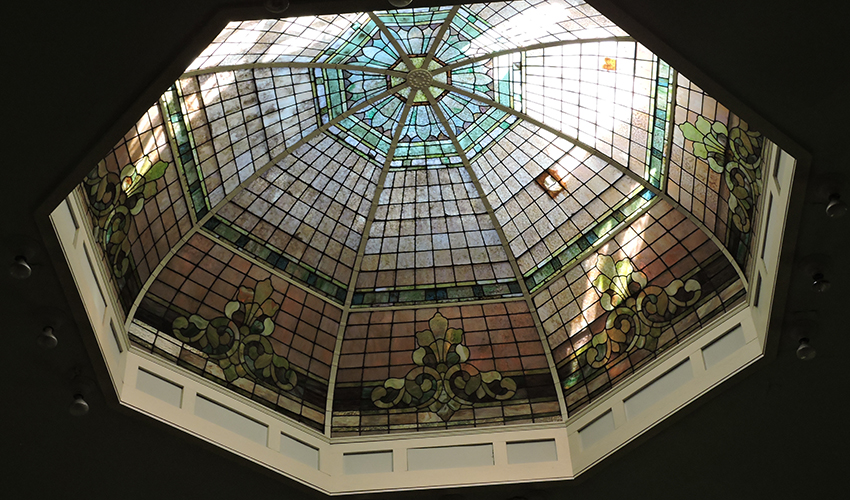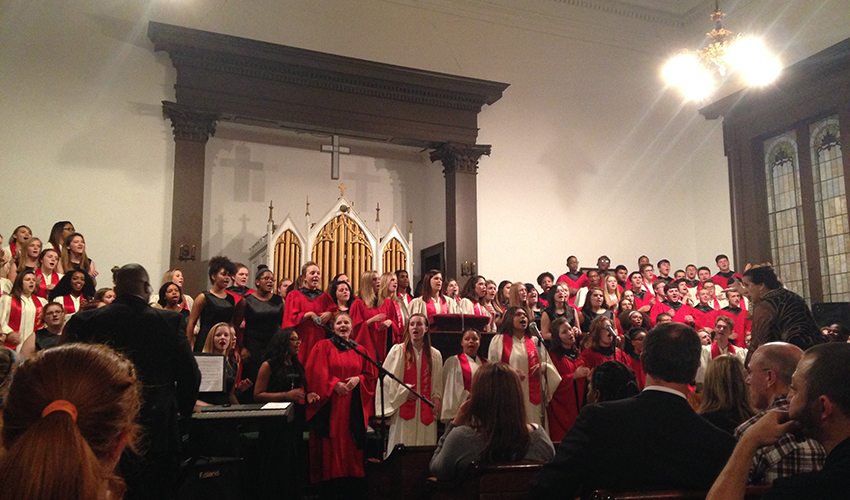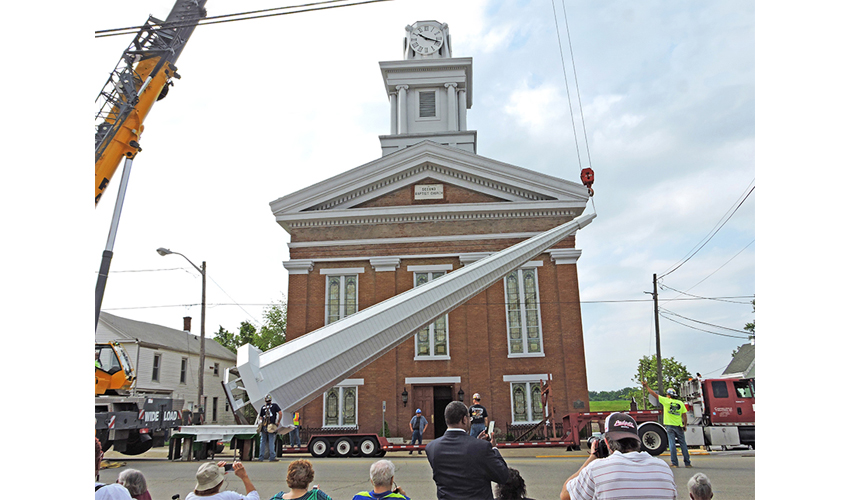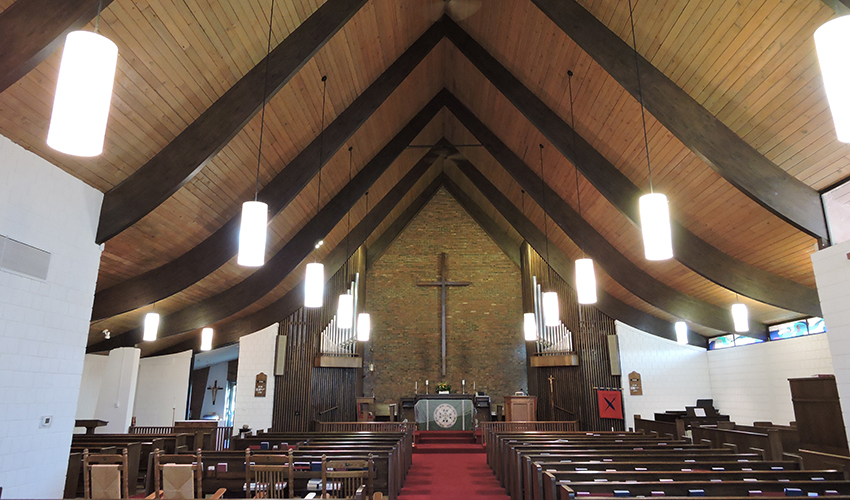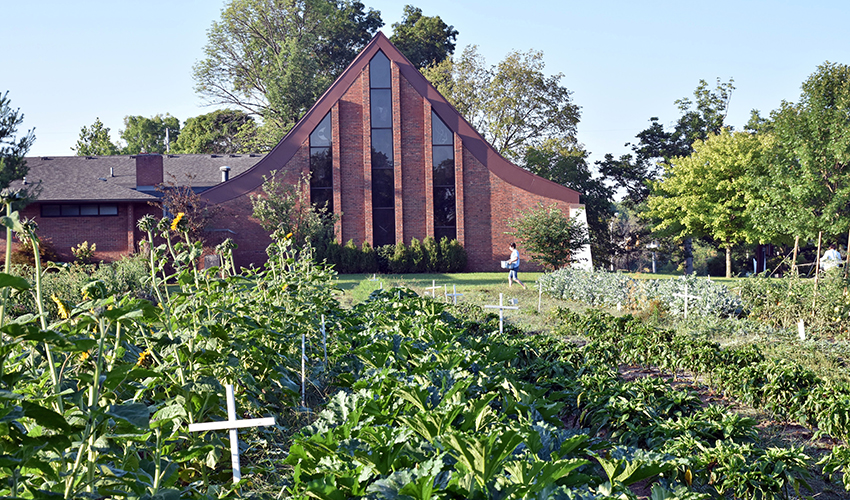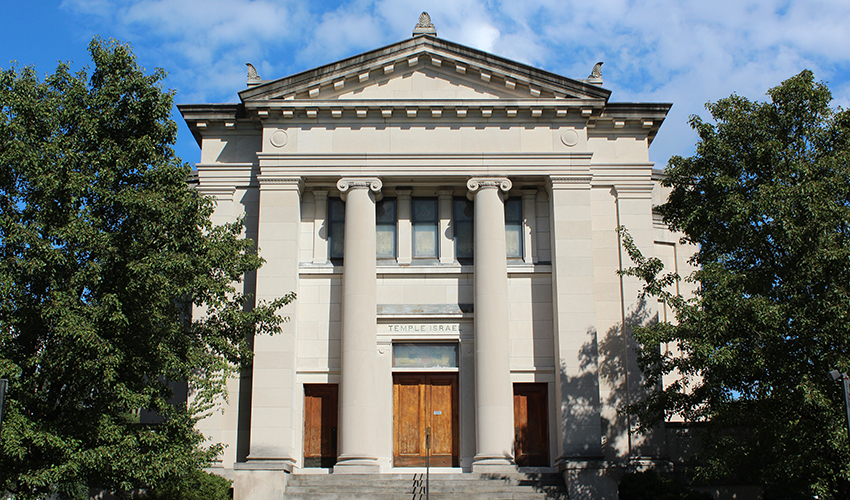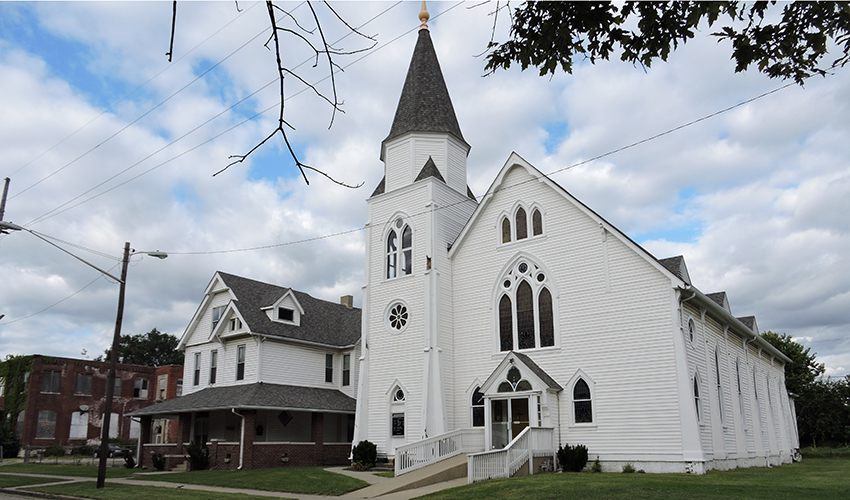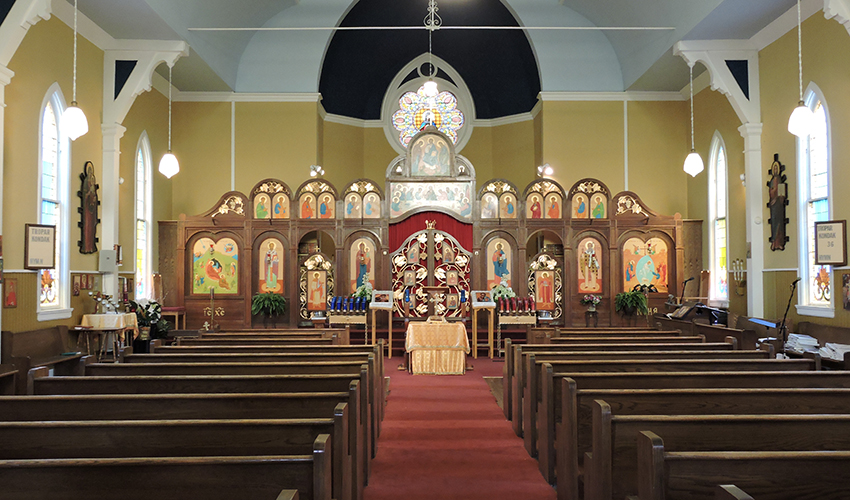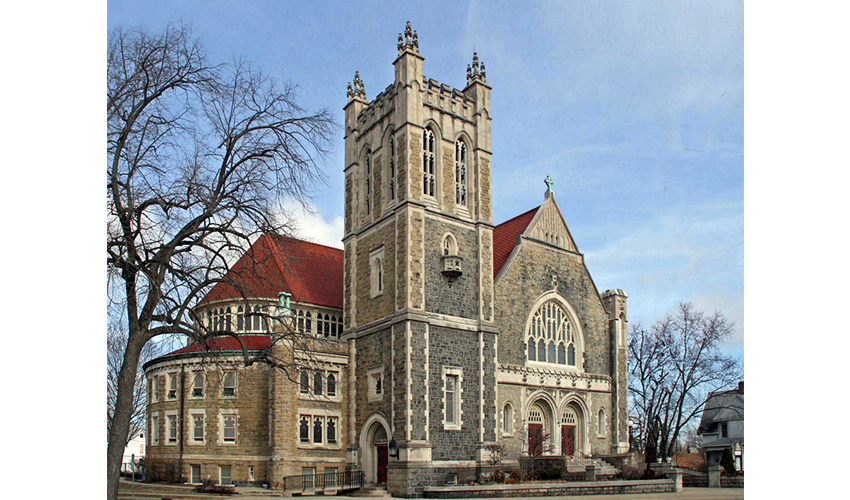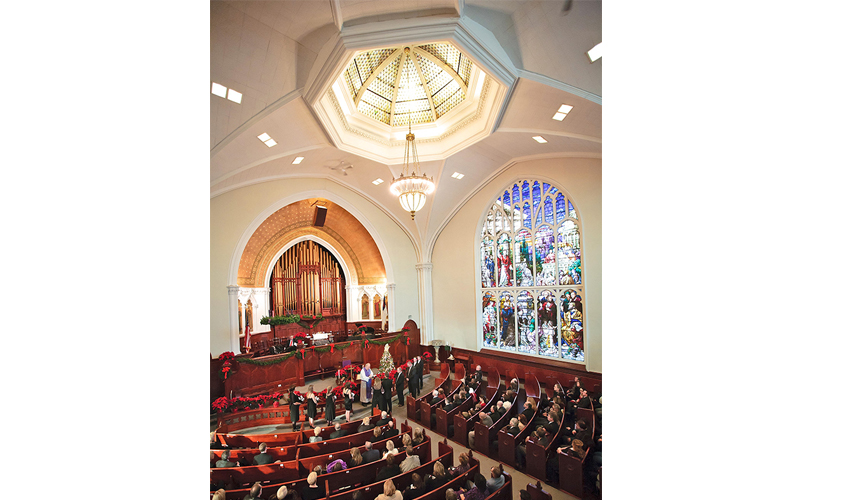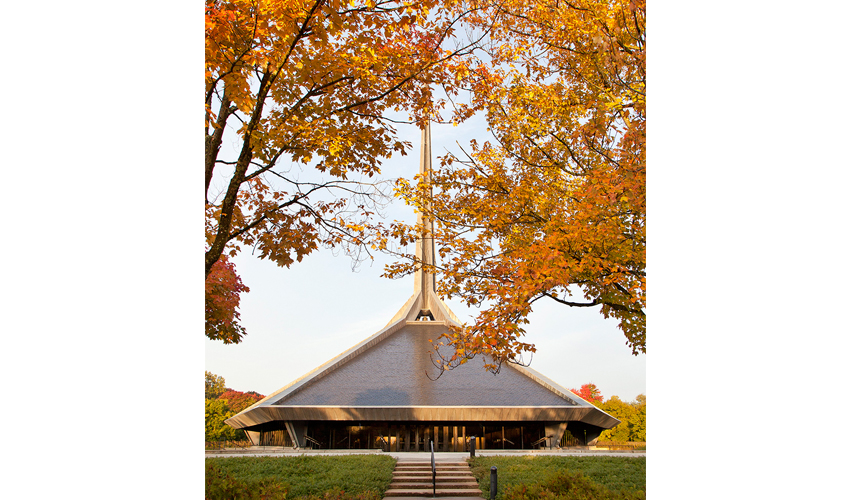NEWS
Reviving Sacred Places
Now in its second year, our Sacred Places Indiana program aids congregations planning a future for their historic houses of worship by providing intensive training on everything from fundraising to building maintenance to organizational planning.
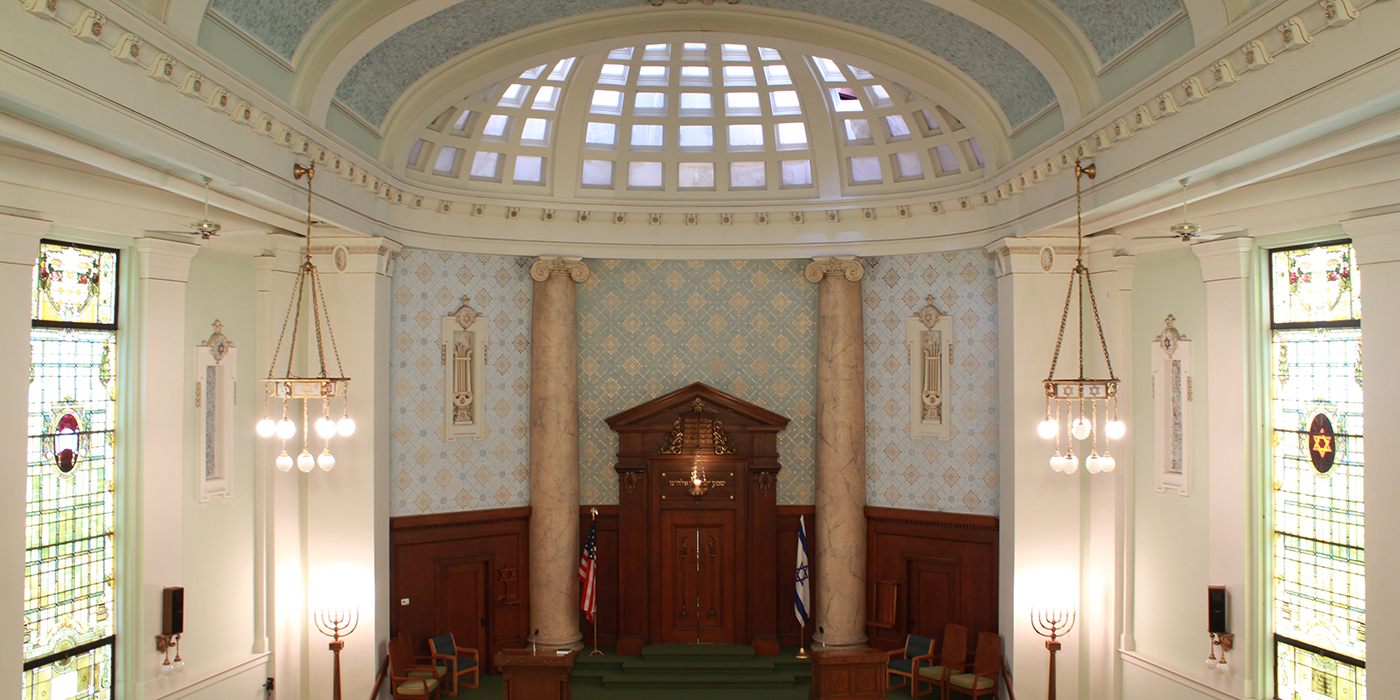
“Welcome to Indiana Landmarks—don’t let this happen to you.” That’s David Frederick’s opening when he shows Indiana Landmarks Center to the clergy and lay leaders he meets at our Indianapolis headquarters, a repurposed nineteenth-century church that once housed the largest Methodist congregation in the state. Frederick directs Sacred Places Indiana, a three-year pilot program entering its second year, a partnership with the national Partners for Sacred Places supported by Lilly Endowment.
Each year, we select eight to ten congregations with historic houses of worship who field five-member teams to receive intensive training in assessing the condition and space in their structures, fundraising, developing a case statement, and organizational planning to leverage their historic buildings as assets.
“Sacred Places Indiana helps congregations think and act strategically. Most of our congregations suffer from this equation: aging and dwindling membership plus declining contributions equals deferred maintenance. Our program alters the problem-to-problem pattern to try to keep congregations in their historic homes,” Frederick notes.
The relationship between secular preservation organizations and faith communities can sometimes involve mutual tension. Congregations don’t exist to worship buildings, after all. “Sacred Places Indiana bridges the gap between preservation organizations and congregations and denominational governing bodies. Our program helps congregations develop visions and plans that capitalize on their landmark structures, regarding them as assets rather than burdens,” Frederick says.
“As we embark on year two, we see Sacred Places Indiana as a powerful, focused, and sustainable program to help congregations and at the same time achieve preservation goals,” says Marsh Davis, president of Indiana Landmarks. “I think Indiana Landmarks and Partners for Sacred Places are creating a national model.”
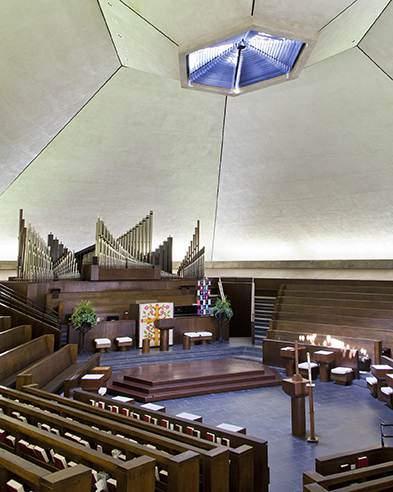
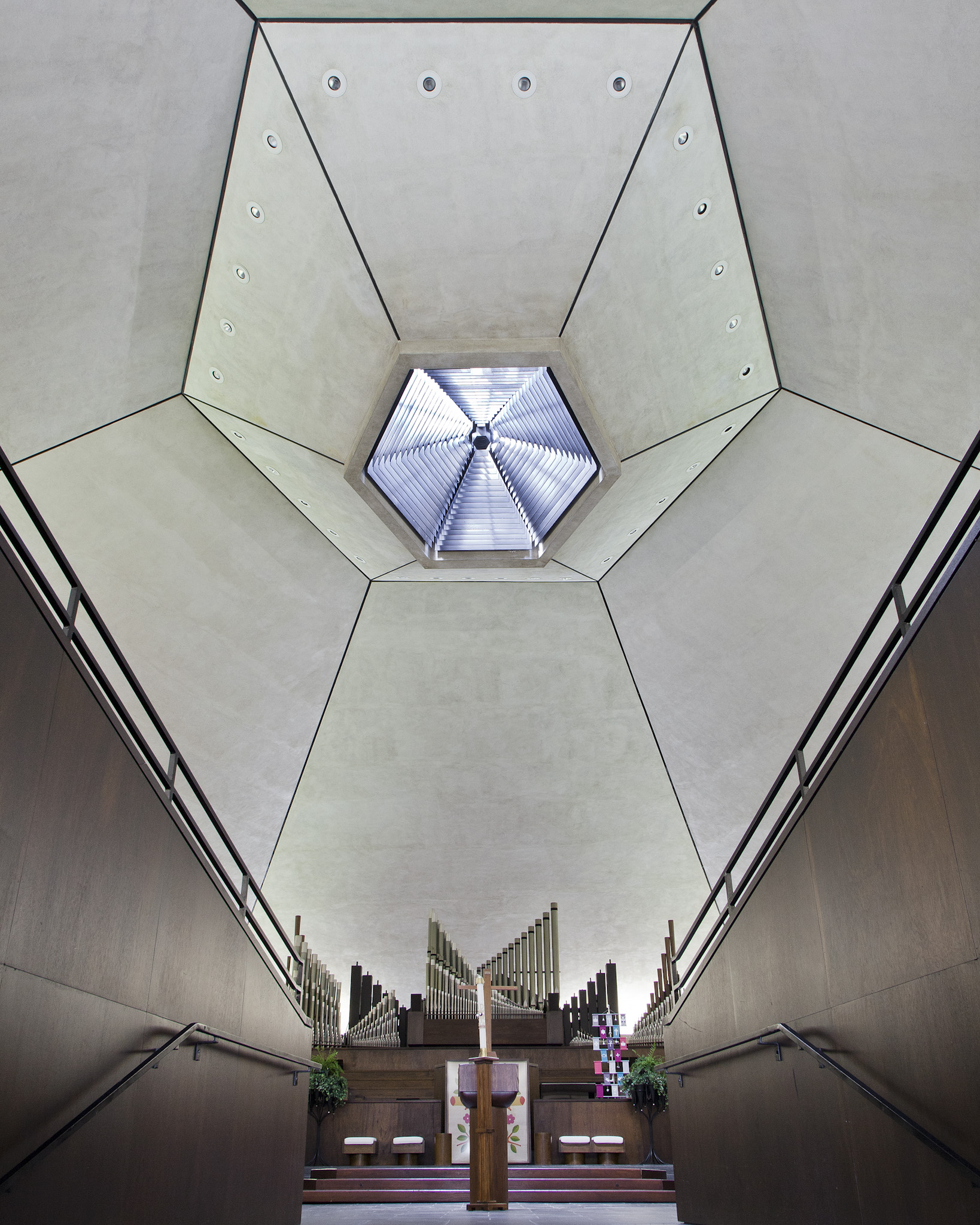
Church Adoption
In 2014, an Easter Sunday article in the Muncie Star Press titled “The Weight of Age” chronicled the long, slow decline of the historic downtown Main Street United Methodist Church. A surprising number of congregants at a suburban Methodist church, the Garden of Gethsemane UMC, noted the prominent article, but it particularly caught the eye of Vickie Perkins, the senior pastor.
The story of Main Street UMC is typical of many urban churches built in the late nineteenth and early twentieth centuries that reached their zeniths in the 1950s and 1960s. Since then, they have slowly dwindled in membership, an erosion that leads to a decline in the physical plant and often signals a diminished connection with the community.
In 2015, Main Street was down to 11 members, almost all 80- and 90-year olds who had been attending for 50 to 60 years. Those 11 contributed the $20,000 needed to keep the building open. “They just hung on. Mostly they were determined to have their funerals at Main Street,” summarizes part-time Reverend Robert Hunt. The Indiana Conference for the United Methodist Church cautioned the tiny congregation it might be time to find a new home.
Across town, Garden at Gethsemane faced different issues. Established as a Methodist church in a near-downtown neighborhood, Gethsemane moved to then-suburban Muncie in the 1950s. In 2014, the congregation completed a multi-million dollar expansion. But the pastor and many congregants felt they had lost their focus, straying from community outreach and ministry.
When Reverend Vickie read that Easter Sunday article, she stuck it on her refrigerator and prayed about it. “God was not done with the little church on the corner,” she concluded, thinking that perhaps combining the two sites and congregations could answer the needs of each.
In 2015, the Garden at Gethsemane proposed an adoption. It would “adopt” Main Street, providing both pastoral and financial support with the combined congregation basing an urban ministry at Main Street. The two churches and their adoption model joined the first New Dollars/New Partners training cohort of Sacred Places Indiana (SPI). They sent a diverse group to SPI training: clergy from each site, a CPA and financial planner, and a not-for-profit administrator and grant writer.
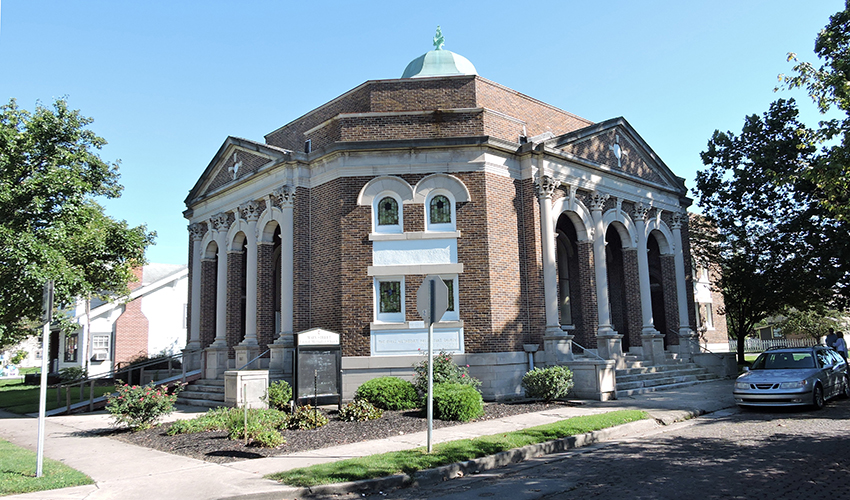
A unique partnership between Muncie’s downtown Main Street United Methodist Church and the suburban Garden of Gethsemane is reviving both congregations and serving needs in the community.
“The training opened us to so many new possibilities. The asset-based development that we explored has become an essential part of our new vision,” notes team participant Greg Maynard.
Since the adoption process began less than a year ago, Sunday worship at Main Street has increased to 50 to 60, including a growing children’s ministry that had been dormant for years. The 1913 structure hosts weekly hot meals for all who hunger, meeting space for addiction counseling, and a refuge and shelter for the homeless.
They are currently forming a separate 501c3 entity to raise money to restore the Neoclassical-style building. The Main Street sanctuary features an outstanding stained glass dome that had been blocked off for decades. In one of the joint venture’s first actions, congregants uncovered the dome and let the light shine out into the neighborhood.
by David Frederick, Director, Sacred Places Indiana
Stay up to date on the latest news, stories, and events from Indiana Landmarks, around the state or in your area.

